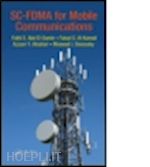Fathi E. Abd El-Samie received his BSc (Honors), MSc, and PhD from Menoufia University, Menouf, Egypt, in 1998, 2001, and 2005, respectively. Since 2005, he has been a teaching staff member with the Department of Electronics and Electrical Communications, Faculty of Electronic Engineering, Menoufia University. He currently serves as a researcher at KACST-TIC in Radio Frequency and Photonics for the e-Society (RFTONICs). He is a coauthor of about 200 papers in international conference proceedings and journals and of 4 textbooks. His research interests include image enhancement, image restoration, image interpolation, super-resolution reconstruction of images, data hiding, multimedia communications, medical image processing, optical signal processing, and digital communications. Dr. Abd El-Samie received the Most Cited Paper Award from the Digital Signal Processing journal in 2008.Faisal S. Al-Kamali received his BSc in electronics and communications engineering from the Faculty of Engineering, Baghdad University, Baghdad, Iraq, in 2001. He received his MSc and PhD in communication engineering from the Faculty of Electronic Engineering, Menoufia University, Menouf, Egypt, in 2008 and 2011, respectively. He joined the teaching staff of the Department of Electrical Engineering, Faculty of Engineering and Architecture, Ibb University, Ibb, Yemen, in 2011. He is a coauthor of several papers in international conferences and journals. His research interests include CDMA systems, OFDMA systems, single-carrier FDMA (SC-FDMA) system, MIMO systems, interference cancellation, synchronization, channel equalization, and channel estimation. Azzam Y. Al-nahari received his BSc in electronics and communications engineering from the University of Technology, Baghdad, Iraq. He received his MSc and PhD from Menoufia University, Egypt, in 2008 and 2011, respectively. He was also a postdoctoral fellow in the Department of Electrical and Information Technology, Lund University, Sweden. He currently serves as an assistant professor in the Department of Electrical Engineering, Ibb University, Yemen. His research interests include MIMO systems, OFDM, cooperative communications and physical layer security.Moawad I. Dessouky received his BSc (Honors) and MSc from the Faculty of Electronic Engineering, Menoufia University, Menouf, Egypt, in 1976 and 1981, respectively, and his PhD from McMaster University, Canada, in 1986. He joined the teaching staff of the Department of Electronics and Electrical Communications, Faculty of Electronic Engineering, Menoufia University, Menouf, Egypt, in 1986. He has published more than 200 scientific papers in national and international conference proceedings and journals. He currently serves as the vice dean of the Faculty of Electronic Engineering, Menoufia University. Dr. Dessouky received the Most Cited Paper Award from Digital Signal Processing journal in 2008. His research interests include spectral estimation techniques, image enhancement, image restoration, super-resolution reconstruction of images, satellite communications, and spread spectrum techniques.











